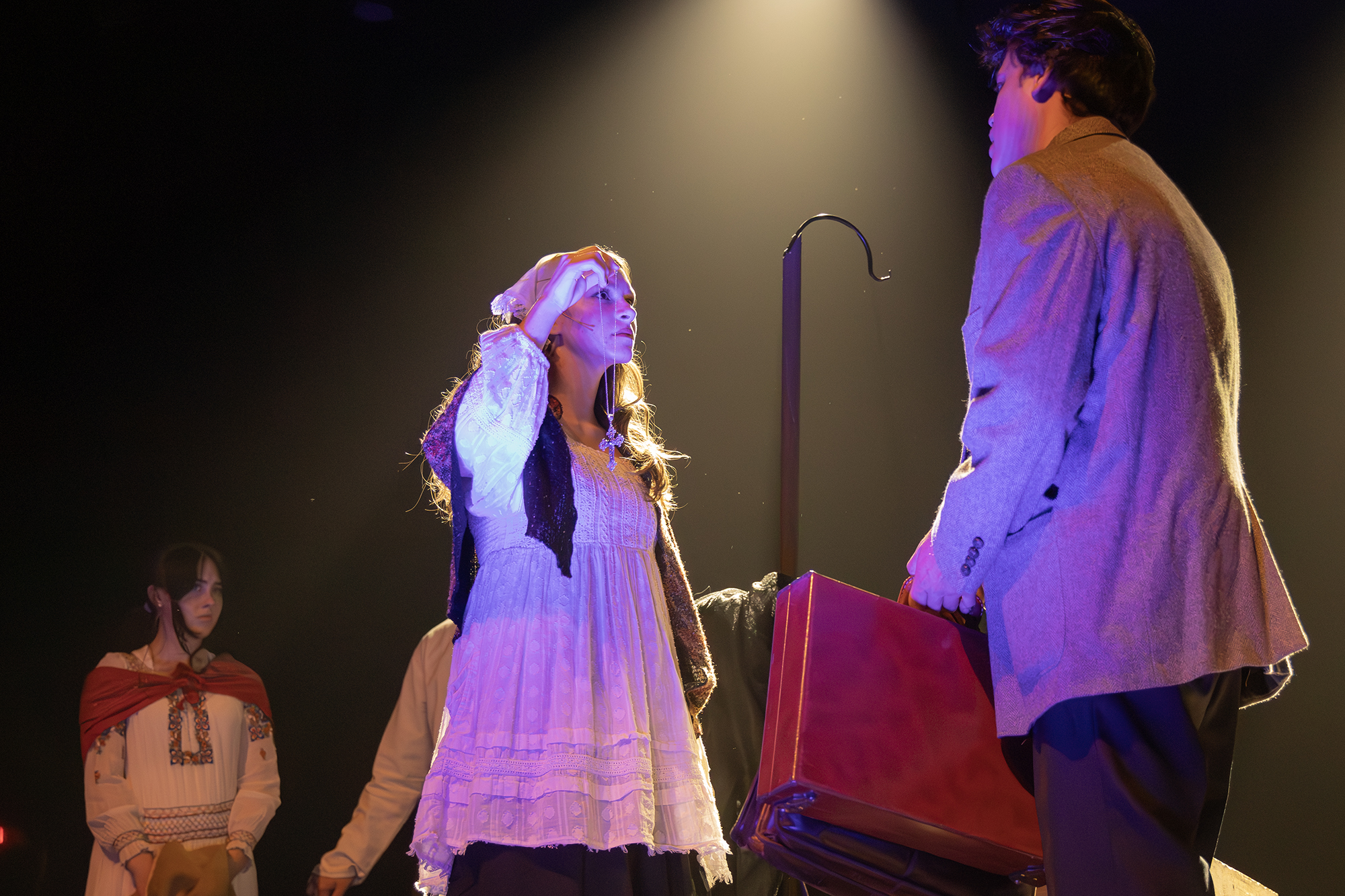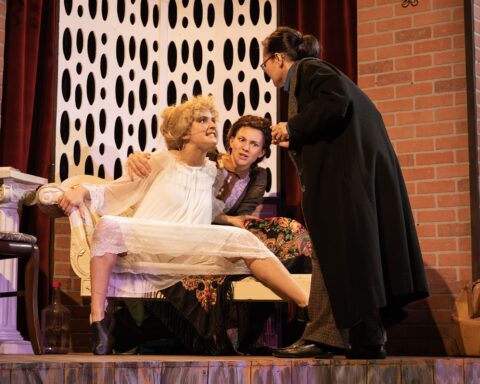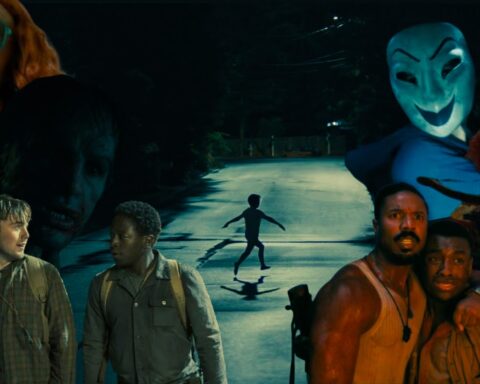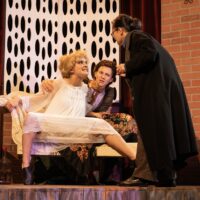Santa Ana College’s Theatre Department presented the new play Dracula on Oct. 11-13 with dark illusions and chilling whispers designed to thrill.
Andrea Decker and Wyn Moreno, wife-and-husband co-writers, reframed Bram Stoker’s Dracula with a female lead to upend the original.
As the director, Moreno wanted to present the haunting nightmares of the Dracula novel in a horror play that is a time-period tale with a modern twist.
“The heart of the story is where people are far more dangerous than they appear,” said Moreno.
Not a real plot departure from the original, the result is a classic story about good versus evil that pits Victorian high society do-gooders against the vampire trying to invade their community. This time, the story was an intimate conversation with Wilhelmina Murray, Dracula’s latest desire.
Even as the central storyteller, Wilhelmina is an ambitious woman poised to marry a respectable estate lawyer, Jonathan Harker, played by Oscar Brito. Her fiancé falling sick sparked the central conflict and represented power dynamics between men and women.
“You will not be getting what you expect,” said Madeline Loewe-Pollack, as Wilhelmina. “Bram took liberties with my story.”
The early promise of the updated story was elating. The choice to style Mina’s various monologues as confessionals did not let the character escape Victorian restrictions for women.
The narrative also focused on exposing ambition, betrayal and madness that pulled characters in separate directions.
Dracula, played by Imran Curic, is ever-present and glamorous, and noted as an adulterous cad. Marco Garcia played Renfield, Dracula’s servant and Harker’s boss, as a believable lunatic. Harker finally sprang to life and assaulted Mina to protect Dracula.
Lieu-Thu Phan played Van Helsing with genuine comedic effect, wielding braided garlic as the vampire slayer. Mariska, Dracula’s wife, played by Gia Miranda, also called on Mina, asking for Dracula’s demise.
Mariska was positioned as the real antagonist – a cool twist that begged for more attention. The ambiguous ending, which only hinted at shared plans for Mariska and Mina, was unsatisfying.
This production of Dracula was built on beloved fear ingredients from popular vampire fiction.
A ship hull on a sea of blackness foretold the sleeping danger in Dracula’s travel boxes. Candles in the darkness, dim lanterns and silent cloaked figures presented the iconic lore of Dracula in movies like 2023’s The Last Voyage of the Demeter.
The performers in black cloaks and veils enacted rituals and also served to set the scenes. A dozen cloaked characters flitted down the aisles and gathered from the darkness, startling the audience. The ensemble moved like wraiths right out of Lord of the Rings movies.
Lighting design, from David Zahacewski and Melina Diaz, elevated fear and mystery. Intense lighting focused on an actor or part of the stage against a dark background, a technique seen in Coppola’s Dracula. In one of the most enthralling scenes, Lady Lucy, played by Maddie Rosenberg, was featured down lit, looking menacing, while at the edges of darkness wraiths lifted her up to tower over her pursuers.
The story drew special attention to female characters who defied social norms. The three wicked women in the adaptation are never damsels in distress.
Though the script does not replay the guy-saves-girl ending in the novel, it also does not solve the unconscious fear problem presented by a modern look at horror and gender power. There were too few scenes that imagined the unexpected women in the after-life of the play. Maybe a third act would have done it.
- Dracula adaptation explores female ambition - October 30, 2024
- District asking for $720 million facilities bond - October 23, 2024
- Construction for LGBTQ+ Center begins this academic year - September 11, 2024
















